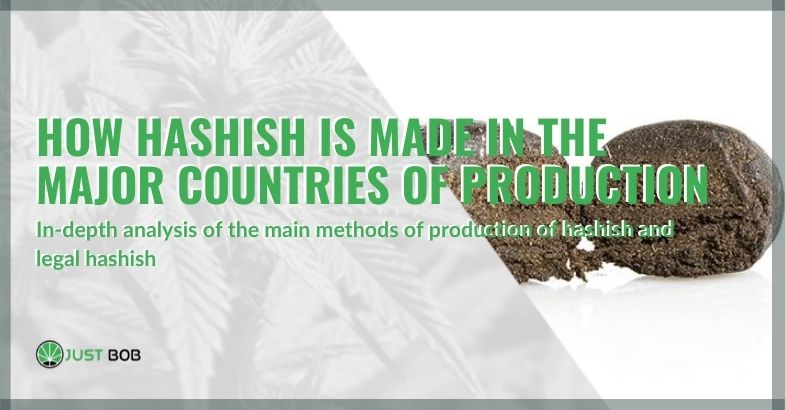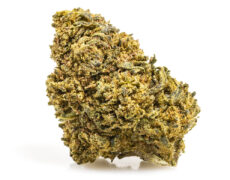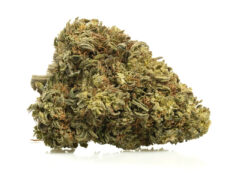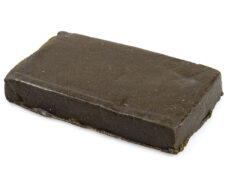Modified on: 14/06/2024
IN-DEPTH ANALYSIS OF THE MAIN METHODS OF PRODUCTION OF HASHISH AND LEGAL HASHISH
Hashish is a derivative of cannabis that usually comes in dough or sphere and can have different textures and colours.
Intrigued by this product, it is likely that you, like many other people, have wondered how it is possible to obtain a legal hash from cannabis plants.
What is hashish and why does it come from the cannabis plant ?
Hashish is a concentrated cannabis product derived from the resin glands of the cannabis concentrate. The process of making hash involves isolating and extracting the resin, which contains cannabinoids, from the cannabis flower. This resin, often referred to as “cannabis resin,” is responsible for the psychoactive effects associated with cannabis use.
There are various techniques for making hash, each yielding different types of products such as bubble hash, dry sift hash, and hash oil. One popular technique is called bubble hash, which utilizes ice water to separate the resin glands from the plant material. In this method, cannabis trichomes containing cannabinoids and terpenes are collected in filter bags, creating a concentrated form known as bubble hash.
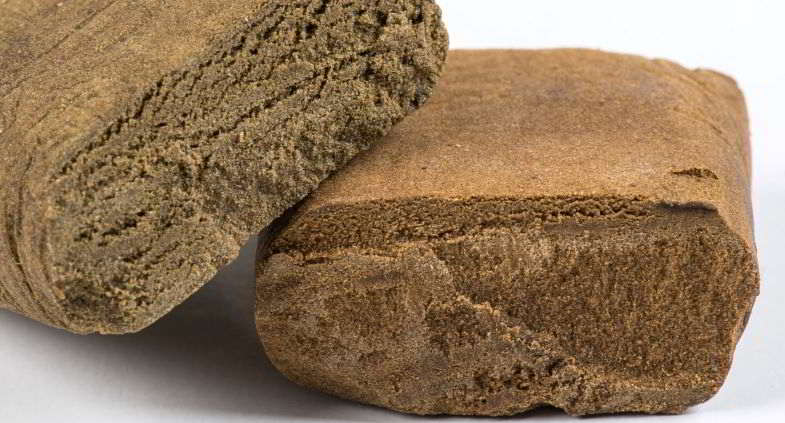

Another method, dry sifting, involves using fine screens to separate trichomes from dried plant material, resulting in a high-quality hash. The collected material can then be further processed into solid bricks or fine powder, depending on individual preferences.
In the ice water hash method, cannabis plant material is agitated in an ice water mixture, causing trichomes to detach. The mixture is then filtered through fine mesh screens or filter bags, producing a product that can range in color from light brown to dark brown, depending on the specific process used.
Hashish can also be made using a hair straightener to extract resin from cbd flower, a process commonly referred to as making “rosin.” This method involves gently squeezing the cannabis material between parchment paper with heat, resulting in a concentrated and solvent-free hash oil.
Hashish has been a part of cannabis culture for centuries, with historical roots in Central Asia and the Middle East. Temple balls, a traditional form of hand-made hash, were historically produced in these regions.
The cannabis industry has witnessed a surge in the popularity of hash and other cannabis concentrates due to their potency and diverse consumption options. Whether smoked, vaporized, or used in edibles, hash provides a concentrated dose of cannabinoids compared to traditional cannabis flower.
In conclusion, the process of making hash involves various techniques and techniques, allowing individuals to tailor the final product to their own preferences. Whether using the ice water method, dry sifting, or other techniques,cbd hash remains a versatile and potent cannabis product, contributing to the evolving landscape of cannabis products in the market.
How is hashish made?
Maybe through the pressing of the plant?
Not! The techniques of realization are different.
Continuing to read, you will be able to find out the main production techniques of this cannabis derivative and how CBD hash is made, the only version of this product that can be legally purchased in the UK.
How is hashish produced? Here are the most popular methods around the world
Hashish, in jargon also called ‘smoke’, is a derivative of cannabis that has ancient origins.
It is a concentrate of pollen (or kief) that is separated from the flowers of the hemp plant and then processed to obtain the loaves of a malleable and particularly fragrant product.
In addition to the aromas and scents, what makes hashish a unique product is the high percentage of cannabinoids it contains. THC prevails in the resin extracted from traditional hemp plants, in that extracted from CBD weed plants, instead, CBD.
It means that compared to the consumption of marijuana buds, hashish causes much more intense and lasting effects.
But concretely, how is hashish produced?
Depending on the product you want to obtain and the geographical area of origin, three techniques are mainly used to obtain hashish:
dry sieving.
the processing of fresh plants.
‘Bubble hash’ (extraction with ice water).
Let’s find out in detail how each of these practices takes place.
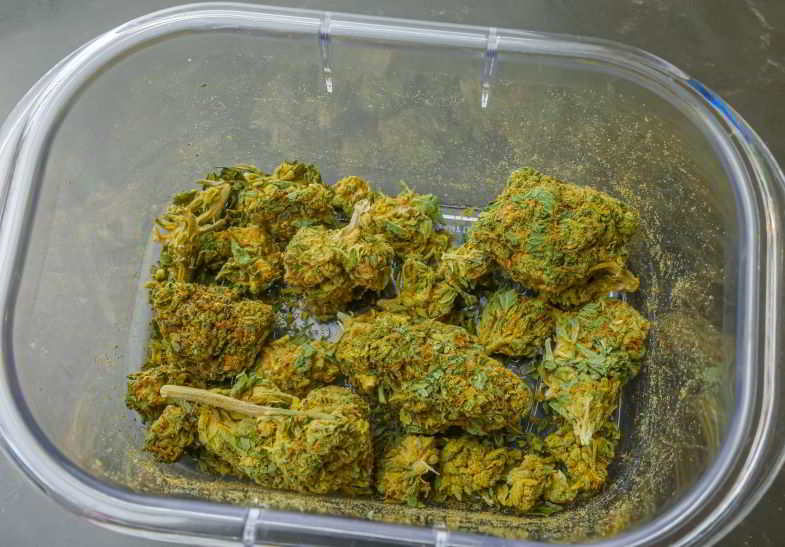

So How to make hash from the plant material ?
Making hash is a process that involves extracting concentrated resin from cannabis plants, resulting in various forms such as dry sift hash, bubble hash, and oil. The techniques used vary, but each aims to separate the resin-rich trichome glands from the plant material.
One popular method is dry sifting, where finely ground cannabis plant material is passed through a fine screen. This separates the trichomes, producing a high-quality, powdery hash known as dry sift hash. The collected material can be further processed based on personal preferences, creating solid bricks or fine powder.
Another method involves using ice water to create bubble hash. Cannabis material is agitated in an ice water mixture, causing trichomes to detach. The mixture is then filtered through bubble bags, separating the resin glands from the plant material. The collected material is then allowed to settle in a second bucket, and the excess water is drained off. After freezing the mixture overnight, the final product is obtained by gently squeezing the bubble bags, resulting in a sticky resin.
Hashish can also be made using the ice water hash method. In this process, cannabis concentrate material is submerged in an ice water mixture, causing trichomes to separate. The mixture is filtered through fine screens or filter bags, and the collected material is then frozen overnight. The excess water is drained, leaving behind a concentrated form of hash.
Hash making can also involve using a hair straightener to create also oil. This method includes gently squeezing cannabis plant material between parchment paper with heat. The resin is extracted from cannabis flower, producing a concentrated and sticky oil.
Regardless of the method chosen, the key is to maximize the extraction of resin from the cannabis plants, creating a potent and concentrated product. These hash-making techniques offer versatility, allowing individuals to produce their own hash at home with larger quantities or in smaller amounts based on personal preferences.
In conclusion, hash making is a diverse and creative process, providing enthusiasts with the flexibility to experiment and tailor their own hash. Whether using dry sifting, bubble bags, or hair straighteners, the goal remains the same – to produce a large qualities hash from cannabis plants that can be enjoyed through smoking or other consumption techniques.
Dry sieving: a technique with ancient origins
One of the oldest and most used techniques to produce hash is undoubtedly dry sieving.
What does it consist of?
To obtain hash using this technique, it is necessary to start from the dried weed buds, from which the resin must be extracted.
Before proceeding, cannabis buds are also frozen. Suppose you wonder why the reason is simple. When exposed to very low temperatures, trichomes separate from flowers much easier, so the extraction process is faster and easier to perform.
As soon as the flowers (or CBD flowers) are ready, they are rubbed over a sieve placed on top of a container that, thanks to this operation, will be filled with pollen or kief. But, of course, the sieves are very large in the industrial field, and instead of the containers, there are large tanks.
Once all the resin has been extracted, it will be heated and pressed on special plates to obtain a soft and fragrant dough tending to brown, dark green, or light green.
Sieving of fresh plants: when hash is produced, literally manually
In addition to dried plants, hash can also be obtained from the fresh resin, and the product obtained is called ‘charas‘.
The extraction of fresh cannabis resin is typical of India but, due to the success of the hash obtained, it has also been exploited in many other places around the world (even to produce legal hash).
Let’s see, then, what it consists of.
After cutting the cannabis buds from the fresh plants, they are rubbed into your hands so that the resin can adhere to them.
As a layer of resin has been deposited on the palms of the hands and fingers, this can be detached through a unique tool to work until it is obtained soft and fragrant spheres of product.
After this process, all that remains is to mature the charas spheres until they become a dark (almost black) colour.
Bubble Hash (or Ice Wax): the latest hash production technique
In addition to the two methods, we talked about in the previous paragraphs, from the 90s onwards, we began to produce hash using another technique: the Bubble Hash or Ice Wax.
What does it consist of?
To produce hash with this technique, it is necessary to freeze the weed buds and equip yourself with a tool called a Bubble box (a system composed of overlapping sieves, prepared with increasingly dense meshes).
To start, the frozen buds are immersed in very cold water. Then this water is filtered with the Bubble box: it is possible to group trichomes of different sizes perfectly clean and free of vegetable substances.
After this phase, it is essential to eliminate all moisture, also thanks to paper or absorbent fabrics, and then store the product obtained in a cool place to dry for a few weeks.
Which is the best way to make hash at home?
When it comes to crafting hash at home, enthusiasts often explore various techniques to find the best-suited approach for their preferences. Two popular techniques, ice water hash and dry sift hash, stand out among the array of options for making quality hash in the comfort of one’s home.
For those inclined towards the moisture-rich variety, wet hash, also known as ice water hash, emerges as a favorable choice. In this method, weed material is immersed in an ice water mixture, prompting trichomes laden with resin to detach. The mixture is then filtered, with larger particles settling in the first bucket, while the coveted resin-rich material is carefully collected. After freezing the mixture overnight, water is drained, leaving behind a concentrated and sticky hash. This method produces a unique texture and potency, often preferred by aficionados seeking a distinctive weed concentrate.
On the other hand, making dry sift hash involves a different process. Finely ground weed material is sifted through fine screens, isolating trichomes and resin in a powder form known as kief. This techinque produces hash with a higher quality and purity, appealing to those who prefer a drier and more refined cannabis concentrate. The collected material can be further processed to create bricks or fine powder, providing versatility in the final product.
Whether one opts for the ice water hash or dry sift hash method, both offer the flexibility to produce hash in large quantities or smaller batches based on individual needs. The freezer plays a crucial role in both techniques, as overnight freezing enhances the extraction process. Gently squeezing the collected material ensures that the resin is separated effectively, resulting in a potent and flavorful hash.
It’s important to note that hash techniques may vary, and personal preferences often guide the choice between wet and dry technique. Enthusiasts may draw inspiration from experts like Robert Connell Clarke, a notable figure in the weed industry, as they explore the world of hash to craft their own unique weed products at home. Ultimately, the best way to make hash at home is a subjective decision, driven by individual tastes and desired weed concentrate characteristics.
How is legal hashish made?
Legal hash, i.e., Hash free of THC (tetrahydrocannabinol) and CBD cannabis plants, can also be produced in another way.
To be sure that there are no traces of psychotropic substances in the product obtained, the resin is extracted from plant species apart from hemp and to this, in addition to the spicy aromas and aromas typical of hashish, pure CBD crystals are added.
In this way, you get a product that can be legally purchased even in Italy, which has nothing to envy to pure hashish extracted from illegal cannabis.
Read also: Hemp cigarettes: how they are made and what their effects are
In conclusion
If you have spent a few minutes reading this article, now you too know the main methods of producing hash.
Depending on the geographical area or the product you want to obtain, you use one technique or the other, while to produce legal hash, which you can also buy in our Justbob store, you mainly use the last one we talked about.
After this in-depth analysis, if you love collecting cannabis buds or some plant derivatives (such as CBD oil), we invite you to visit our cannabis light shop.
Choose the items you like the most and receive them directly at home with an anonymous packaging.
We are waiting for you on our CBD online shop!

